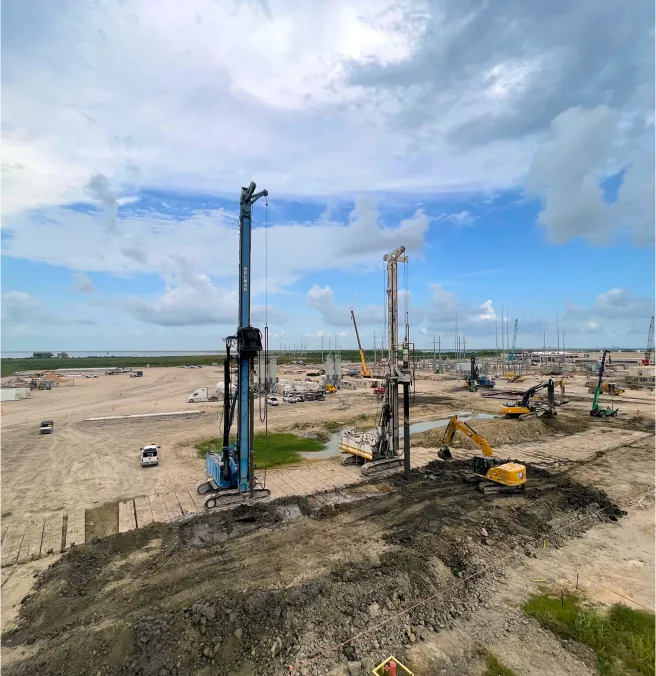Liquefaction mitigation & ground improvement
ENTACT specializes in ground improvement and liquefaction mitigation by utilizing our leading industry expertise in deep soil mixing (DSM) and in-situ stabilization (ISS) to effectively reduce the risks of liquefaction, lateral spreading, and soil settlement, providing long-term stability for your construction projects.
Defining Ground Improvement
Ground improvement refers to a variety of geotechnical methods used to strengthen soil, reduce settlement, and enhance the load-bearing capacity of the ground. This process is vital for projects built on weak or loose soils, especially in areas prone to seismic liquefaction. Stabilization methods such as deep soil mixing are used to improve the soil’s performance, ensuring the durability of infrastructure and minimizing the risk of future soil movement.
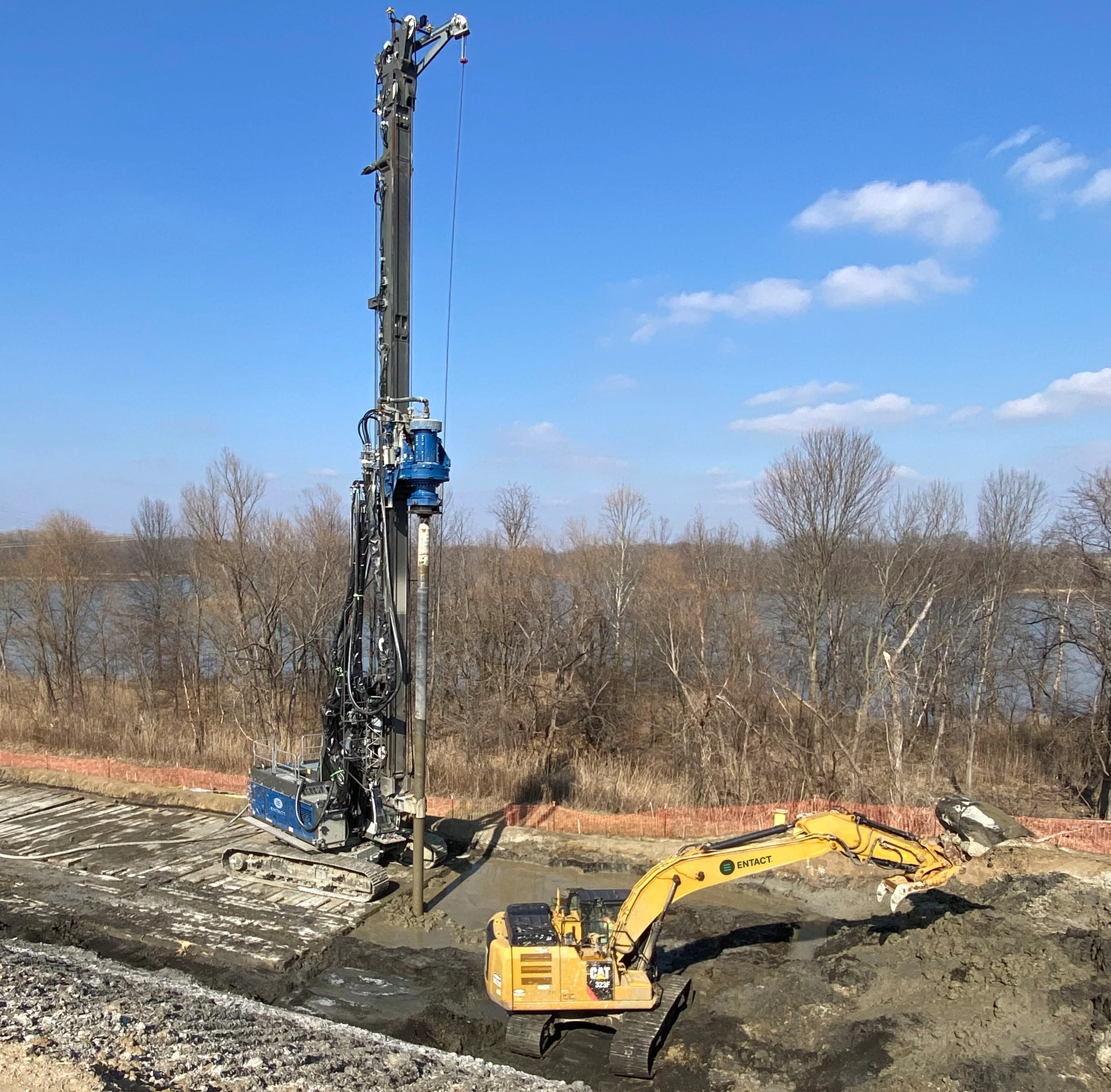
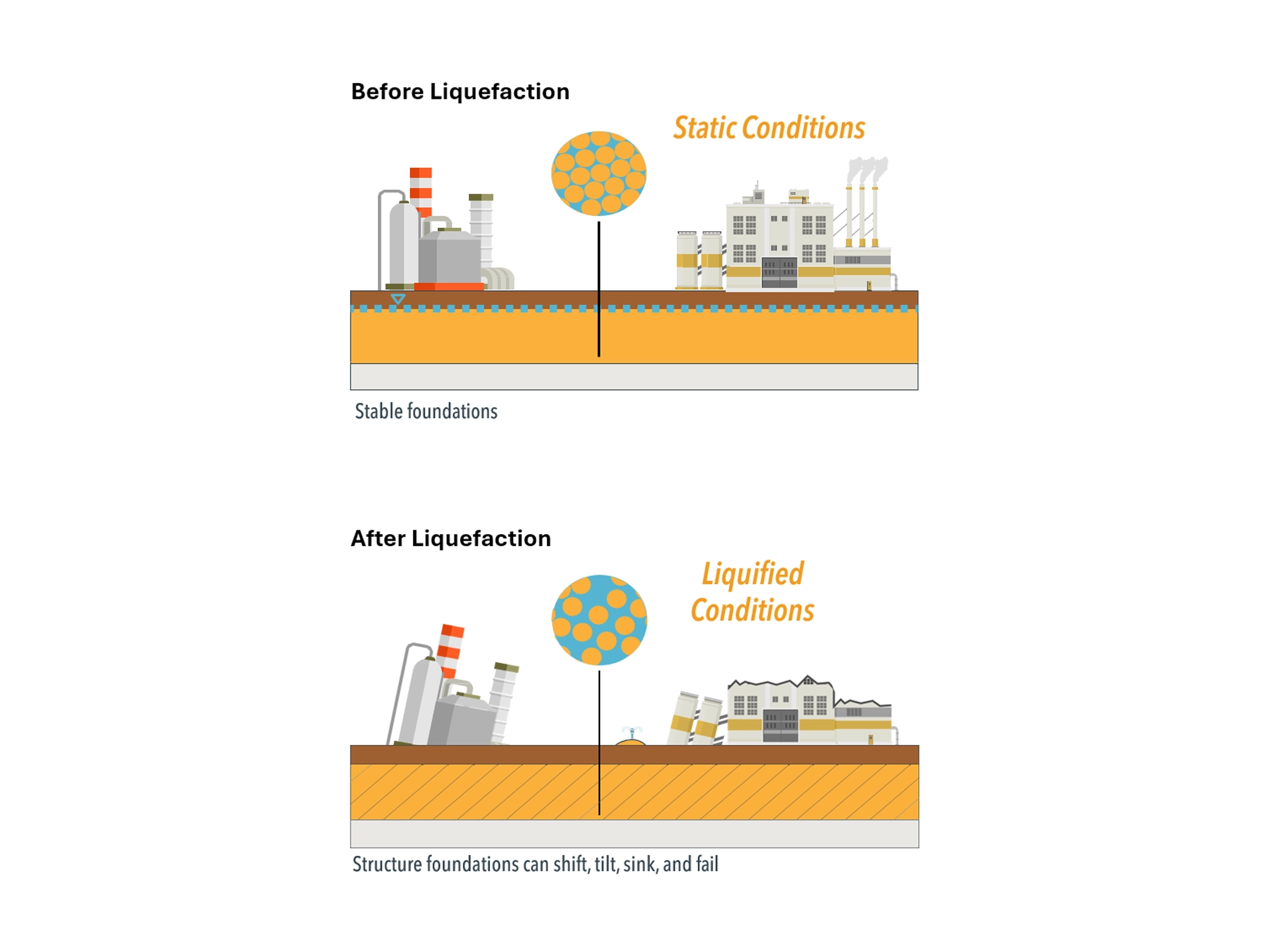
What is seismic liquefaction
Seismic liquefaction is a phenomenon where loose, granular soils below the groundwater table temporarily lose their strength and stiffness in response to earthquake shaking, causing them to behave like a viscous liquid.
How Seismic Liquefaction Occurs:
- Shaking from an earthquake: During seismic activity, cyclic loading causes the soil particles to try to rearrange into a denser configuration. However, this rearrangement is resisted by the incompressible water between the particles.
- Pore water pressure increases: Because the water can’t escape quickly enough, the water pressure within the pores between the particles increases.
- Loss of shear strength: When the pore pressure becomes as high as force of gravity keeping the particles together, the soils effectively are suspended within the pore water and separated from each other. At this point, the soil can no longer resist shear, and it loses its strength, essentially behaving like a liquid (or more accurately like quicksand). Quicksand is another type of liquified soil, but caused by a spring of water welling up from a confined aquifer.
Structures on sites that liquify can sink into the ground, differentially settle, or have complete bearing capacity failures and tip over.
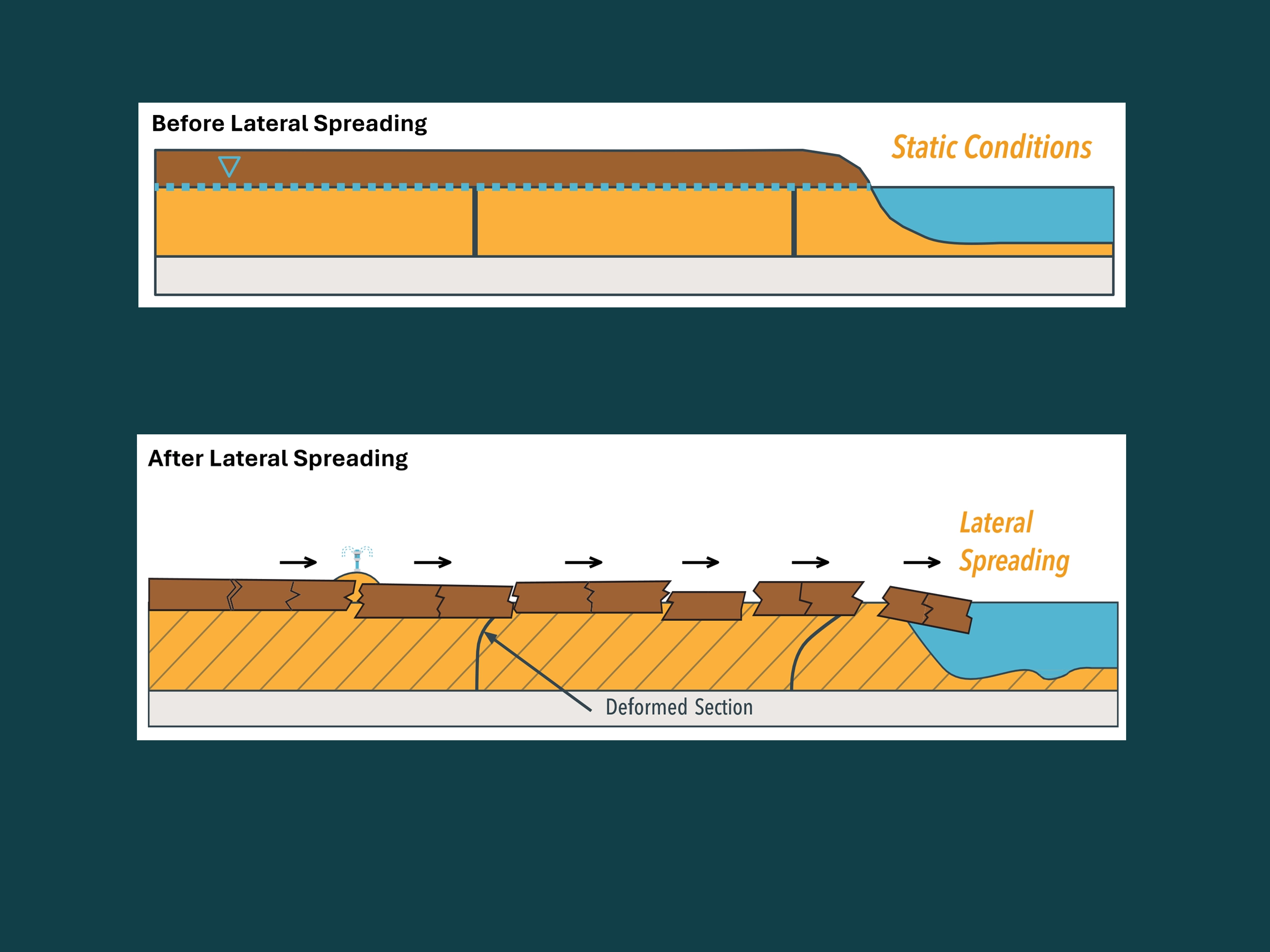
What is lateral spreading
Lateral spreading is a phenomenon where liquefied soils move horizontally, often downslope or toward a free face such as a riverbank, embankment, or bulkhead. While the lateral movement itself can be damaging, the most destructive aspect is the differential displacement that occurs across the site. Soils closer to the slope or free face typically move much farther than soils farther away, creating tension and distortion in the ground. This uneven movement can tear apart buildings, pipelines, roads, and other infrastructure located on the spreading soils.
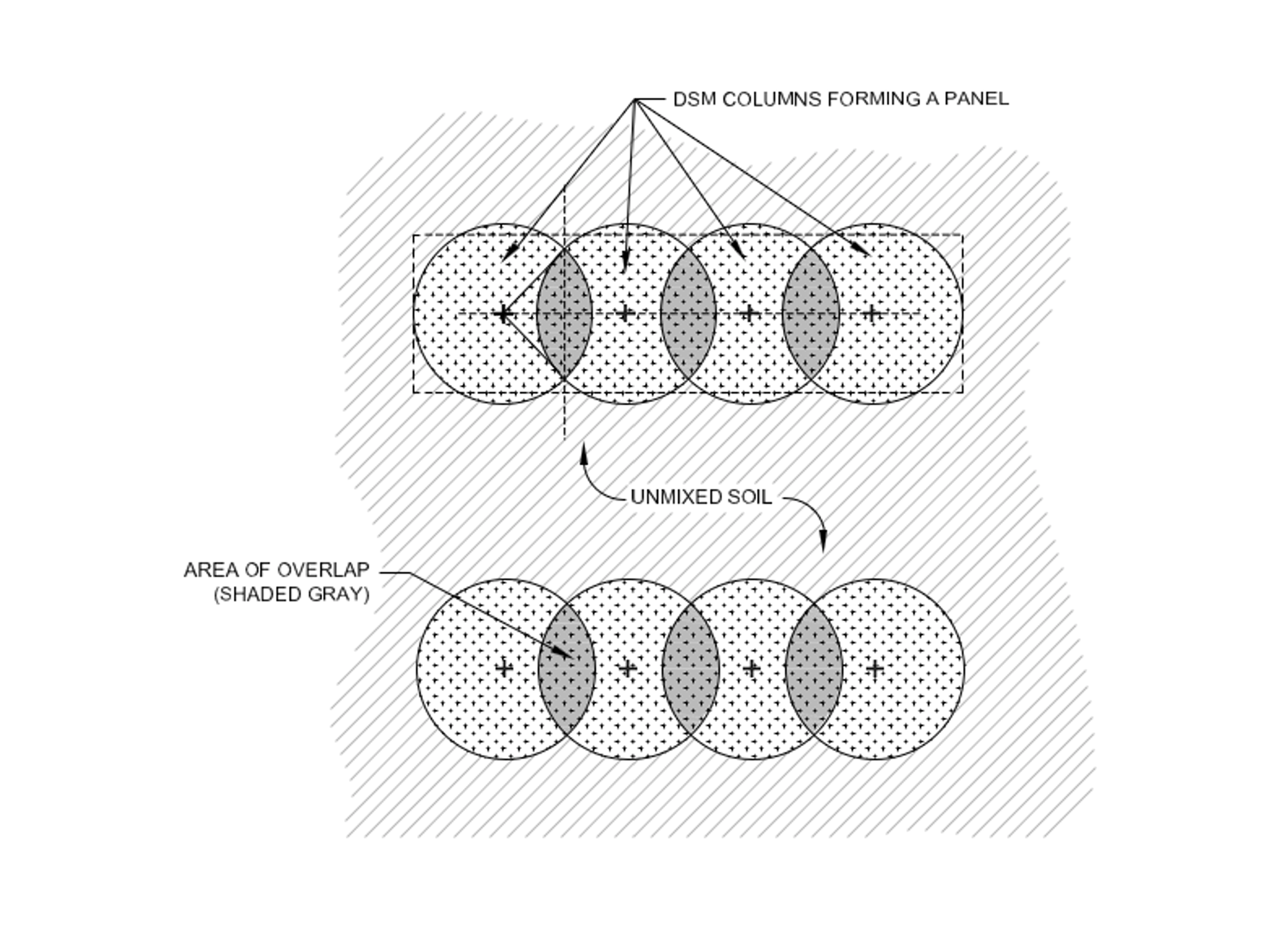
Our liquefaction mitigation solutions
At ENTACT, we utilize deep soil mixing to reduce the risks of soil liquefaction and lateral spreading. By reinforcing the soil beneath and adjacent to critical infrastructure, our solutions ensure a stable foundation, even in seismic or high-risk areas.
Deep Soil Mixing for Liquefaction Mitigation
Deep Soil Mixing (DSM) is one of the most effective methods to mitigate the risks of seismic liquefaction (especially in soils with silt and clay content above 8%). DSM is a ground improvement technique where a binding agent such as cement, lime, or blast furnace slag is mechanically mixed in-situ into weak or unstable soil. After mixing, the treated soil is allowed to cure. The resulting mixture has improved soil properties including higher compressive strength, higher stiffness, and lower hydraulic conductivity.
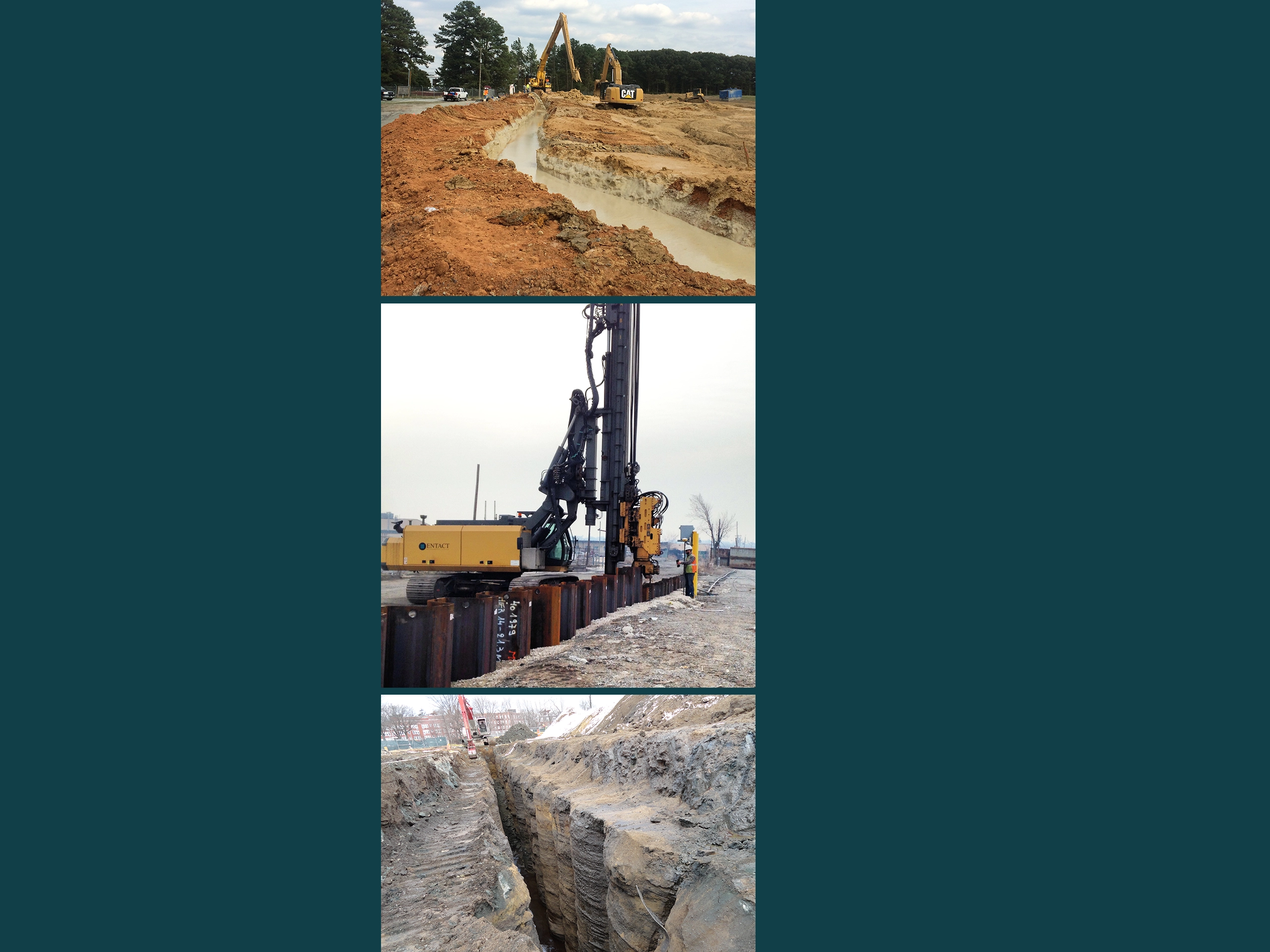
Contaminated sites with liquefiable soils
Many properties along waterways have historical contamination that requires remediation. At sites that are also susceptible to seismic liquefaction and lateral spreading, ENTACT can employ a technology called In-Situ Stabilization (ISS) to address both risks simultaneously. ISS is effectively the same technology as DSM (mechanically mixing cementitious material into soil to improve strength and lower hydraulic conductivity).
ISS is ideal for upland and subaqueous projects, where stabilization is needed in both land and water environments. Using this technique helps mitigate seismic risks while addressing environmental concerns.
Advantages of ISS for Liquefaction Mitigation:
- Strengthens and stabilizes soils to prevent liquefaction during earthquakes.
- Reduces the risk of contaminant migration, making it ideal for brownfield redevelopment projects.
- Effective in both upland and subaqueous settings.
Shoring & Wall Construction for Liquefaction Mitigation
At ENTACT, our in-house team brings vast expertise in shoring and wall construction designed to various site issues. We combine cutting-edge equipment with advanced engineering techniques to design and install custom barrier systems like sheet piles, soil cement, and cutoff walls, effectively preventing water migration, providing support of excavation or shoring and stabilizing soil in seismic-prone areas. With a track record of building some of the most complex barrier wall systems nationwide, ENTACT’s solutions provide reliable performance even under the toughest soil and seismic conditions.
Wall systems we specialize in include:
- Steel, Vinyl, & HDPE Sheet Piles: Ideal for support of excavation and water control.
- Soil-Crete Retaining Walls: Offer high-strength solutions for reinforcing and stabilizing soil, can be used in conjunction with other Deep Mixing Systems to mitigate liquefaction and lateral spread.
- Slurry Cutoff Walls: Used to contain contaminants and prevent groundwater migration.
- In-Situ Auger Soil Mixed Column Walls: Offers high-strength solutions for reinforcing and stabilizing soil.
Frequently asked questions
Liquefaction mitigation techniques like deep soil mixing and in-situ stabilization work by reinforcing weak or loose soils, reducing their ability to liquefy during an earthquake. These methods increase soil strength and decrease permeability, ensuring subsurface stability even during seismic events.
